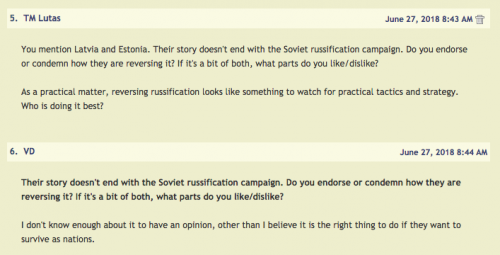Much ink and many photons have been spent discussing Russia’s attempts to influence (or at least disrupt) the American 2016 Presidential campaign. Meanwhile…
Here’s an appalling story about how anger from the Chinese government led Marriott Corporation to fire an employee who had ‘liked’ a tweet which congratulated the company for listing Tibet as a country, along with Hong Kong and Taiwan….of course, the Chinese regime considers Tibet to be a part of China, not a separate country.
China forced Marriott to suspend all online booking for a week at its nearly 300 Chinese hotels. A Chinese leader also demanded the company publicly apologize and “seriously deal with the people responsible,” the Journal reported.
And boy, did Marriott ever apologize. Craig Smith, president of the hotel chain’s Asian division, told the China Daily that Marriott had committed two significant mistakes — presumably the survey listing Tibet and the liked tweet — that “appeared to undermine Marriott’s long-held respect for China’s sovereignty and territorial integrity.”
He announced an “eight-point rectification plan” that included education for hotel employees across the globe and stricter supervision.
And the Marriott executive said this to China’s most-read English-language newspaper: “This is a huge mistake, probably one of the biggest in my career.”
(More here…according to this article, the Chinese suppression of Marriott bookings was in response to the initial listing of Tibet as a country rather than to the tweet approving of this listing)
The Chinese economy is, shall we say, a little more dynamic than that of Russia, so the government of China has much more ability to strong-arm American corporations (in general) than does the Putin regime.
Turning now from the hotel industry to the movie industry, Richard Gere says that Chinese pressure due to his stand on Tibetan independence has led to his being dropped from big Hollywood movies. Also:
Gere’s activities have not just made Hollywood apparently reluctant to cast him in big films, he says they once resulted in him being banished from an independently financed, non-studio film which was not even intended for a Chinese release.
“There was something I was going to do with a Chinese director, and two weeks before we were going to shoot, he called saying, ‘Sorry, I can’t do it,’” Gere recalled. “We had a secret phone call on a protected line. If I had worked with this director, he, his family would never have been allowed to leave the country ever again, and he would never work.”
See also How China’s Censors Influence Hollywood. Because the Chinese market is so large…(Fast and Furious 7 pulled in $388 million in China, more than it made in the US)…the influence of the Chinese regime on US film production and distribution has become immense.
In recent years, foreign filmmakers have also gone out of their way not to provoke the Communist Party. For instance, the 2012 remake of the Cold War action movie, Red Dawn, originally featured Chinese soldiers invading an American town. After filming was complete, though, the moviemakers went back and turned the attacking army into North Koreans, which seemed a safer target, at least until last year’s hack of Sony Pictures.
and
Ying Zhu, a professor of media culture at the College of Staten Island at the City University of New York, worries China’s growing market power is giving the Communist Party too much leverage over Hollywood.
“The Chinese censors can act as world film police on how China can be depicted, how China’s government can be depicted, in Hollywood films,” she says. “Therefore, films critical of the Chinese government will be absolutely taboo.”
In the late 1990s, when China’s box office was still small, Hollywood did make movies that angered the Communist Party, such as Seven Years In Tibet, about the life of the Dalai Lama, and Red Corner, a Richard Gere thriller that criticized China’s legal system. Given the importance of the China market now, Zhu says those movies wouldn’t get financing today.
Plus, Chinese companies have snapped up Hollywood studios, theaters and production companies.
Read more

